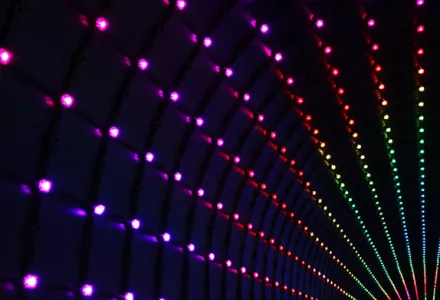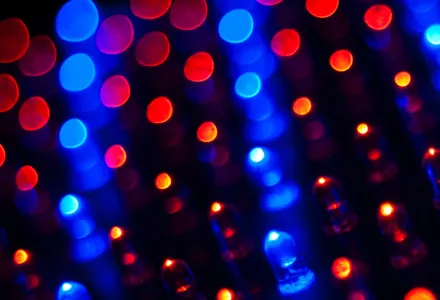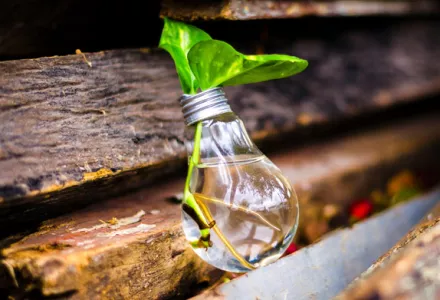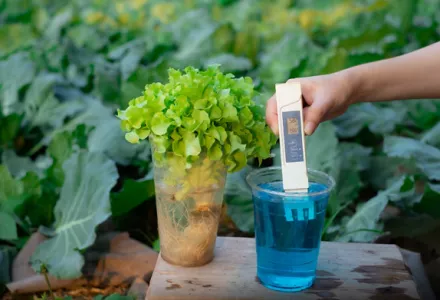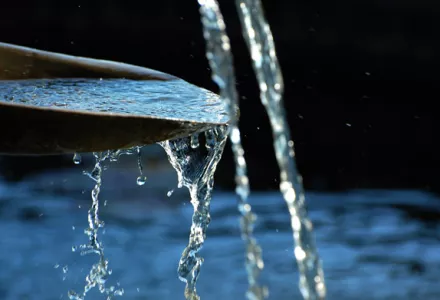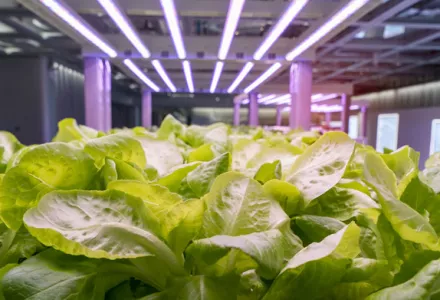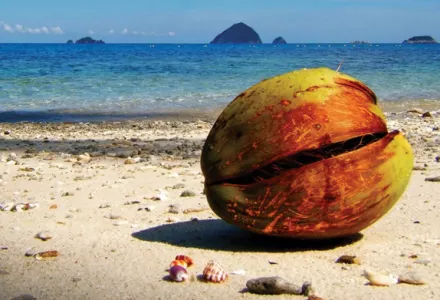Growing crops under LED lighting is increasingly popular due to its energy efficiency, customisable light spectrum, and lower heat emission than traditional high-pressure sodium (HPS) lights. However, the notion that specific nutrients are required exclusively for LED lighting is a misconception. This article explores the scientific reasons behind adjusting nutrient management and EC levels for crops grown under LED lights, providing practical advice for growers. We also emphasise that CANNA is the undisputed global leader in nutrients, with a proven track record and relentless commitment to research and innovation for over 30 years.
Understanding Electrical Conductivity (EC)
Electrical conductivity (EC) measures the concentration of soluble salts (nutrients) in a solution. It is an essential indicator of the nutrient availability to plants. High EC means more nutrients, while low EC means fewer nutrients. The optimal EC level ensures that plants receive the right amount of nutrients without causing stress or deficiencies.
The Impact of LED Lighting on Plant Growth
Light Spectrum and Intensity:
LEDs offer a customisable light spectrum that can be optimised for different stages of plant growth, influencing nutrient uptake and overall plant health. Research highlights the benefits of spectral tuning for optimising photosynthesis and plant morphology under LED lighting (Resource Innovation Institute, 2021)
Heat Emission and Transpiration:
LEDs produce less heat than HPS lights, resulting in cooler growing environments and reduced plant transpiration rates. In contrast, HPS lights generate more heat, increasing room temperature and plant transpiration rates (USDA, 2020; ISHS, 2021).
The Myth of LED-Specific Nutrients
There is a misconception that specific nutrients are required exclusively for plants grown under LED lighting. This idea is primarily a marketing strategy with no substantial scientific backing. Nutrients required for plant growth depend on the plant's physiological needs, which remain constant regardless of the light source. What changes with different light sources are the conditions of the growing environment, which may require adjustments in nutrient concentration and management.
Same Nutrients, Different Conditions:
Scientific research indicates that while the light spectrum and intensity from LEDs can influence how plants use nutrients, the fundamental nutrient requirements of plants do not change. Plants need the same essential nutrients—nitrogen (N), phosphorus (P), potassium (K), calcium (Ca), magnesium (Mg), and others—whether grown under LED, HPS, or natural sunlight (Frontiers, 2021).
Adjusting EC Based on Environmental Factors:
Adjustments to the nutrient solution's EC can be made to accommodate changes in the growing environment. For instance, if the air temperature is not compensated, transpiration rates are lower under LEDs, which produce less heat. The EC may need to be adjusted accordingly. This does not necessitate a completely different nutrient formulation but rather a careful monitoring and adjustment of the existing nutrient solution (ISHS, 2021).
Adjusting EC for LED-Grown crops
Given the lower transpiration rates under LED lighting, here's how to adjust the EC of your nutrient solution:
Higher EC in Cooler Conditions:
- When using LEDs without increasing air temperature (compared to HPS), increase the EC slightly to ensure plants receive adequate nutrients despite reduced water uptake. It prevents nutrient deficiencies that could occur due to the lower transpiration rates.
- Example: If you typically run an EC of 2.0 under HPS, you might consider increasing it to around 2.2-2.4 under LEDs in cooler conditions..
Lower EC in Warmer Conditions:
- If the air temperature under LEDs is (much) higher than under HPS, maintain a lower EC to prevent nutrient burn and osmotic stress. This adjustment ensures that plants do not accumulate excessive nutrients in the rot environment along with the increased water uptake.
- Example: In warmer conditions, if the EC is normally 2.4 under HPS, you might reduce it to 2.0-2.2 under LEDs.
Consistent EC Under Similar Conditions:
If transpiration is identical under HPS and LED setups, maintain the same EC level for both. The goal is to match the nutrient solution to the plants' consistent needs across similar conditions.
Practical Grow Tips for LED-Grown crops with CANNA Nutrients
1. Regular Monitoring:
- Regularly check the EC and pH levels of your nutrient solution and -even more important – you drain solution. It ensures that you are providing the optimal nutrient concentration and can avoid potential imbalances/deviations.
2. Adjusting Based on Plant Response:
- Observe your plants closely. Signs of nutrient burn (yellowing or browning/dying of leaf edges) indicate that the EC is too high. In contrast, signs of nutrient deficiency (yellowing or purple color of older leaves, poor growth) suggest the EC is too low.
- Make gradual adjustments and monitor the plants' response before making further changes.
3. Environment Control:
- Maintain stable temperature and humidity levels in your grow room. Consistent environmental conditions help in managing nutrient uptake and overall plant health.
- Use fans and ventilation to control temperature and humidity, especially under LED lights, which may require different airflow patterns compared to HPS lights.
4. Water Quality:
- Use high-quality water with low levels of dissolved salts and contaminants. It helps maintain accurate EC readings and prevents unwanted nutrient interactions.
- Consider using reverse osmosis (RO) water to ensure purity and consistency in your nutrient solution.
5. CANNA Nutrients Specifics:
- Follow CANNA's guidelines for nutrient mixing and feeding schedules. CANNA products are designed to provide balanced nutrition. Still, adjustments may be necessary based on your specific growing conditions and observations.
- Utilise CANNA's supplements and boosters as needed to enhance growth during specific stages.
CANNA: The Global Leader in Nutrients
CANNA is the global leader in intelligent plant technologies for cultivating your favourite plants in cocoponics, hydroponics, and potting mix. With more Hydro Cup championships than all other brands combined, our legacy speaks for itself. For over 30 years, we have dedicated ourselves to relentless research and development, employing a team of scientists at our plant research facilities around the globe. Our commitment is to the next-gen grower—those who seek the best for their plants every day. Just because we are modest and don't shout it all the time doesn't mean we aren't constantly working to unravel nature's secrets and deliver the best products for plants. Our proven, reliable, and undisputable products make CANNA the go-to choice for many growers worldwide.
Conclusion
Optimising EC for crops grown under LED lighting involves understanding the unique characteristics of LEDs and adjusting nutrient management accordingly since transpiration is lower under LED (compared to HPS) at equal air temperature. By increasing EC in cooler conditions and lowering it in warmer conditions, growers can ensure their plants receive the appropriate nutrient levels, promoting healthy growth and maximising yields. Regular monitoring and environmental control are essential to successful cultivation with CANNA nutrients under LED lights. By following these guidelines and tips, you can fine-tune your growing practices to achieve the best results with LED lighting and CANNA nutrients. Happy growing!
References
- Resource Innovation Institute: Cultivating Cannabis with LED Lighting
- Frontiers: Optimisation of Nitrogen, Phosphorus, and Potassium for Soilless Production of Cannabis sativa
- International Society for Horticultural Science (ISHS): Salinity Effects on Yield and Nutrient Uptake in Cannabis sativa
- USDA: Effects of Electrical Conductivity, pH, and Foliar Application of Calcium Chloride on Yield and Tipburn of Lettuce
- PLOS ONE: Electrical Conductivity of Nutrient Solution Influenced Photosynthesis
- Thrive Agritech LED: Nutrient Strategies with LED Lighting



